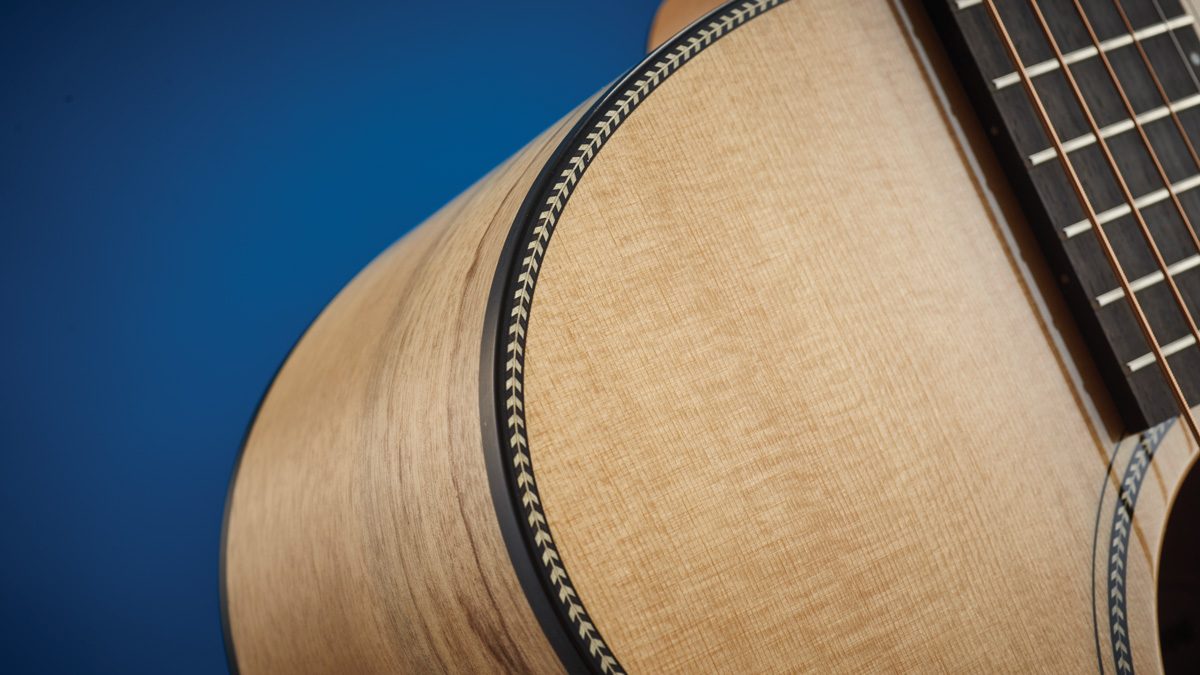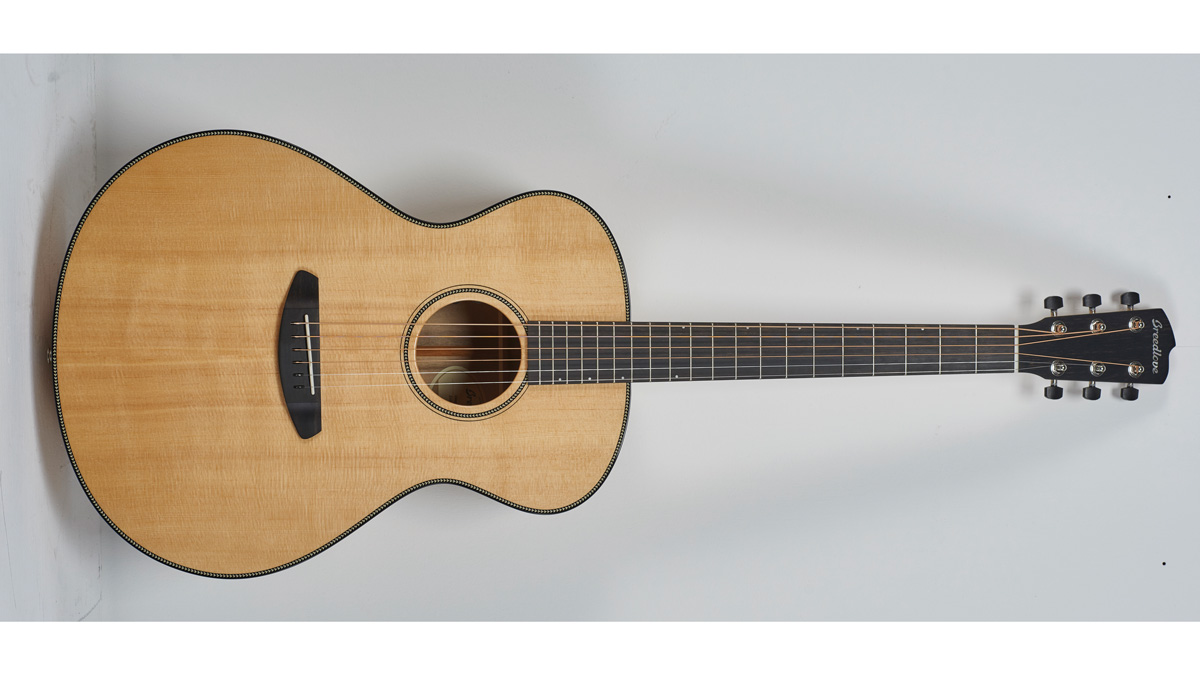MusicRadar Verdict
A really strong contender.
Pros
- +
Understated good looks, great tone, unusual tonewoods.
Cons
- -
Lack of a tuner might put some off.
MusicRadar's got your back
Founded in Bend, Oregon in 1990 by Larry Breedlove and Steve Henderson, it has been Steve’s brother Kim who has really driven Breedlove forward over the years.
Forward looking features, innovative looks, and latterly, a commitment to using Chinese manufacturing to make Breedloves more affordable. The founders both left at the end of the 90s, but Kim, who joined after the formation of the company as a master luthier, remains in that role even as the company is now owned by the Two Old Hippies guitars group, which also owns Bedell and mandolin specialists Weber.
This guitar comes from a series which is moving away from Breedlove’s signature visual features into more conventional territory, and it needs to be good to compete without the usual visual differentiators.
Build
The word Breedlove conjures a particular image in my mind; asymmetric headstock, sharp angular cutaway, lightning bolt bridge. Love them or hate them, they create a clear visual signature that screams Breedlove.
This has none of those features, in fact, nothing to distinguish it, at a distance, from the herd of concert body guitars in your local shop! So what do we have in place of the familiar recipe? Well, a new body size for one thing; larger than a concert, not as large as a jumbo, but with the curvaceous shape common to both rather than the more squared off lines of the dreadnought, Breedlove calls it the concerto.
The top is sitka spruce; a really lustrous piece with so much cross silking that it’s actually hard to examine the grain under artificial light. When you manage to do so, it’s tight and even, certainly of good enough quality for the price point, and like all Breedloves, it’ll be a graduated top, slightly thicker on the treble side to provide brighter highs and more resonant lows.

The top is bound in what looks like mahogany, with herringbone purfling mirroring the simple soundhole rosette. Back and sides are solid myrtlewood, an unusual tonewood which Breedlove uses more than any other major builder. This example is pale and handsome, relatively little figuring compared to some of the more dramatic cuts we’ve seen, but certainly striking.
Want all the hottest music and gear news, reviews, deals, features and more, direct to your inbox? Sign up here.
The bridge is a Breedlove special even if it’s not shaped like a lightning bolt; their pinless designs load from the back, with the stated aim of reducing the number of holes in the top and therefore improving resonance. This example is in ebony, with a saddle which looks like real bone, though Breedlove does’t specify.
In keeping with the general simple appointments of this guitar, the ebony fingerboard has very small offset dot markers (conventional edge markers are in place), has 20 reasonably chunky frets, and a nut that again feels like real bone.
The ebony is mounted to a hard rock maple neck finished in a wonderful silk treatment which feels fantastic in the hand. The peghead, cut with a wave motif in the top, is faced in ebony with a simple Breedlove mother of pearl script inlay, and has their own tuners, which seem much like everyone else’s, and work perfectly.
There’s an LR Baggs element undersaddle pickup too, hooked to the simplest of head units, a volume and tone hidden inside the soundhole, so that the guitar looks all acoustic from the outside.
Overall, this is a handsome guitar; the extra size of the concerto body isn’t obvious, the proportions great, and the overall look subtle, understated and classy in a way we don’t associate with Breedlove, despite always being a fan.
Many of its guitars are now made in China, but this is from the Oregon series, made in Bend, and is executed to perfection. We couldn’t find a thing to criticise, in quality terms, and the neck finish is really a bit special.
Sound
The concerto is big, to put it bluntly; bigger than it looks. Across the room, you could think you were about to get an OM, but this is like a curvy dreadnought; big, wide and deep. It’s not too large to wrangle though; it doesn’t feel as imposing as, for instance, a Gibson SJ 200, but there’s plenty of presence, and you certainly know you’re holding a guitar.
The neck is a typical modern C profile, and really stands out with the wonderful finish, making it a pleasure to play. The guitar came set up with rather higher action at the bridge than I’d like, but low enough at the nut, so playability is fine until you get up to the dusty end. Intonation is perfect across the board, as it should be at this price.
Opinion on the character of myrtle is divided; some sources put it somewhere between mahogany and rosewood, while Breedlove themselves describe it as being very direct and full of fundamental, rather as maple would be.
The neck is a typical modern C profile, and really stands out with the wonderful finish, making it a pleasure to play
That’s how it sounds here too; there’s a brightness to the tone, not so much at the treble end, but in the mids and lows. Plenty of punch, decent volume, but not much harmonic overtone. that doesn’t sound appealing but it very much is; it might not be rich, but it is resonant, ringing, with good sustain, and very balanced.
Fingerstyle was wonderful on this guitar; the platform of the powerful, responsive bass, subtle when you want it to be, loud when pressed is perfect for the bright, clear, airy top end, and while individual notes might not be dripping in harmonic bloom as they would be in a cedar and mahogany guitar, the overall picture is deeply pleasing.
Strumming produces more of the same; punch, projection and clarity, and the harder you push it, the more focused and together it sounds. We simply couldn’t get this guitar to muddy up no matter how hard we drove the top.
We found this guitar to be quite the all rounder; fingerstyle rang out bright and clear, strumming has plenty of punch and presence, and at picking lines cut through well and grabbed the ear. It’s a cracking acoustic tone, and it mostly carries over when plugged in.
LR Baggs claims that the design of their pickup avoids quack, but it doesn’t altogether. Care must be taken with the plugged-in tone, since the extra punch and pop of the piezo somewhat emphasises what’s already there, but with judicious use of the EQ on our amp, we were able to get pretty close to the acoustic tone.
This is a really nice guitar; it moves away from Breedlove’s modernist roots towards a more traditional look, and does it with aplomb. The understated looks will take Breedlove’s appeal to a wider audience, and sonically, it’s a little different to the usual wood combinations, with a very useable tone that works for most styles.
When you’ve got £2,979 to put on the table, you have a lot of high quality guitars to try, and for us, the concerto brings more than enough that’s new to the party to be well worth trying.
